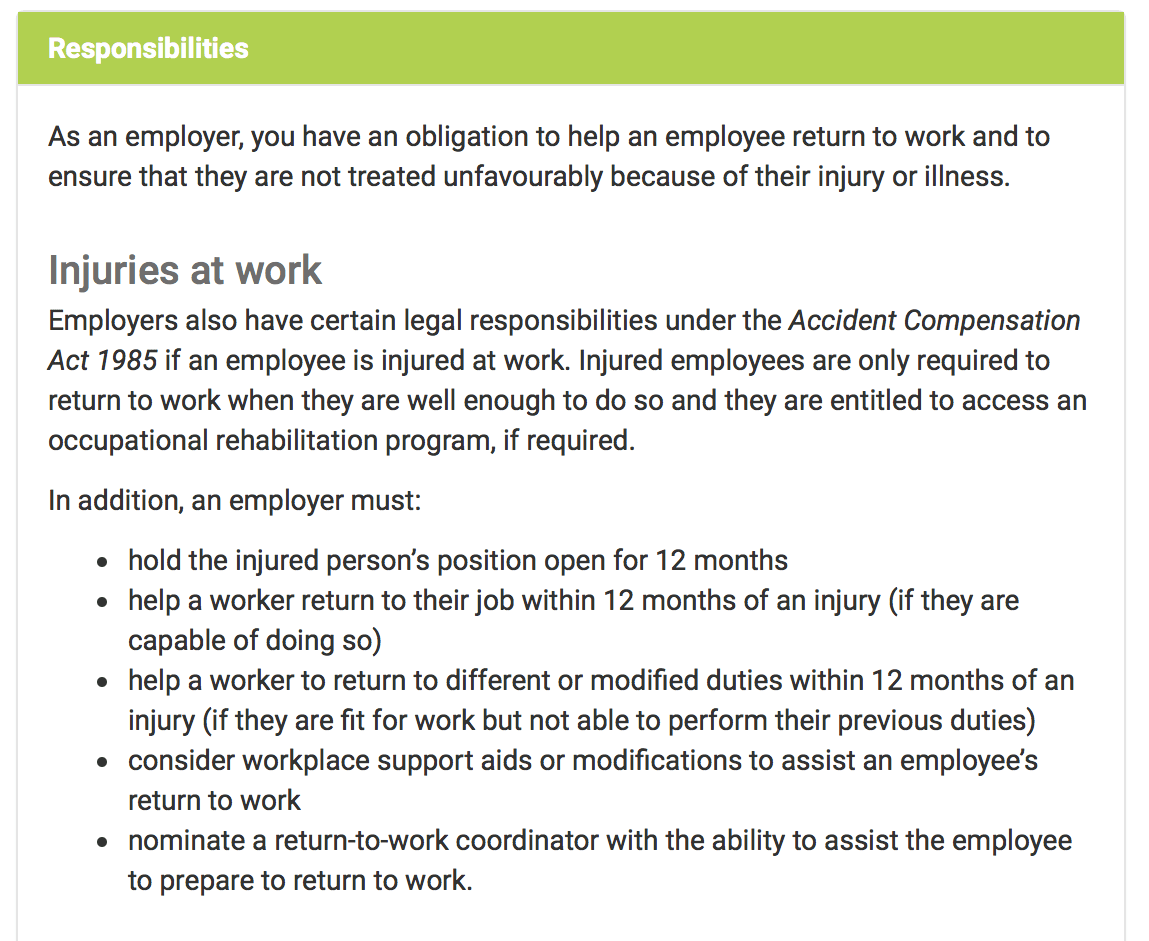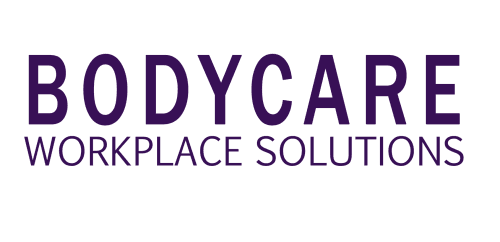What you need to know about non work-related injuries

Employers have more than a legal reason to support the recovery and return to work of injured employees — regardless of whether it’s a work-related or non work-related injury.
According to a study conducted by Unisys, on average, replacing an employee costs ‘1.5 times that person’s annual salary.’ And this is to say nothing about ‘direct costs’ which ‘include recruitment fees and training expenses’ and indirect costs which are ‘just as significant, such as loss of productivity and time wasted searching for a replacement.’
The only cases in which employers in Australia can terminate employees – regardless of whether it’s a work-related injury or a non work-related injury – is if the employer’s reasoning shows that they’re trying to protect the workplace and make it safe for other employees to function.
So what do employers need to be mindful of when it comes to returning to work after work-related or non work-related injuries?
What is a work-related injury?
A work-related injury is, essentially, any injury sustained at a workplace and related to the operations within a place of work by an employee. Usually, this means that the workers’ compensation claims are eligible to be covered by WorkCover.
To start, let’s take a look at the state of affairs — of injuries in Australian workplaces in 2019 and 2020 — to get a sense of current trends.
- There were 120,355 serious workers’ compensation claims.
- 31% of serious claims were for illness and diseases. Of these, mental health conditions were the most common.
- The 3 occupations with the highest frequency rate of serious claims were:
– labourers
– community and personal service workers
– machinery operators and drivers. - The 3 industries with the highest frequency rate of serious claims were:
– agriculture, forestry and fishing
– manufacturing, and
– transport, postal and warehousing. - 69% of serious claims were for injuries. The 3 most common injury types were:
– traumatic joint/ligament and muscle/tendon injuries (38% of all serious claims)
– musculoskeletal and connective tissue diseases (18%)
– wounds, lacerations, amputations and internal organ damage (16%).
Source: Australian workers’ compensation statistics 2019-20
What is a non work-related injury?
A non work-related injury is one that has been suffered or sustained outside of work and/or outside of any functions relating to the workplace. In other words, these can be injuries sustained when workers aren’t ‘on the clock’ anymore and due to other activities they undertake, of their own volition, in their daily lives.
Anything from physical exertion resulting in a sports injury to cutting yourself in the kitchen while prepping dinner: these are good examples of non work-related injuries.
But, even in the case of these non work-related injuries, employers have an obligation to support employees in their recovery. It’s also an employee’s responsibility to let employers know that their request for time off is due to a non work-related injury.
Responsibilities of employers
Employers have an obligation to employees. Much of this is a legal requirement and follows anti-discrimination laws in the workplace in Australia.
The Accident Compensation Act
What are you responsible for, as an employer, in the case of these serious claims? The Victorian Equal Opportunity and Human Rights Commission outlines the following:

Source: Victorian Equal Opportunity and Human Rights Commission
Making Adjustments
Employers need to accommodate requests for modified work and work that is adjusted as well. This includes making adjustments to the actual job duties and how they’re carried out.
Equal Treatment
Workplace relationships and interactions are employers’ responsibility. The idea is that employers set the tone for the attitude towards a worker who’s returning from an injury.
So, if there is discrimination by other employees towards the individual injured, it’s up to the employer not only to be aware, but also to put a stop to the behaviour.
Modified Work
Employers must also offer ‘modified work,’ which includes modifications to the job at hand and using supports to help employees perform their normal tasks.
Therapy and Healing
And lastly, employers should check in with employees about their process and speed of recovery.
There shouldn’t be any undue pressure or unspoken sense of a timeline by which employees either ‘need to recover by’ or that there might be retaliation or the risk of losing their job.
Whether it’s a work-related injury or a non work-related injury, employers are still answerable to the law for being a part of the recovery of their employees.
Returning to work after a non work-related injury
In a position statement outlined by The Australasian Faculty of Occupational & Environmental Medicine, The Royal Australasian College of Physicians is quick to note that ‘an individual’s beliefs and expectations about return to work are major drivers of outcomes…the single most reliable factor in predicting an individual’s return to work is whether or not they believe they will return to work.’
Employers appearing uncaring or too eager to replace employees who have been injured can directly affect a worker’s ability to return to work at all.
After a period of absence from work because of a non-related injury, it’s up to the employer to put into place a ‘RTW’ arrangement.
In the case of work-related injuries, the employer has a unique opportunity. The Return to Work Monitor Survey reports that, at a national level, almost 37% of injured workers say that the risk to other workers experiencing the same workplace injuring is ‘high’. It’s in the best interest of everyone, employers included, to not just offer care but to then take steps to mitigate these circumstances from cropping up again.
Injuries, whether they occur in the workplace or not, can hold an employee back temporarily. By taking proactive steps to make the return to work process as smooth as possible, the organisation as a whole has a lot to gain.


